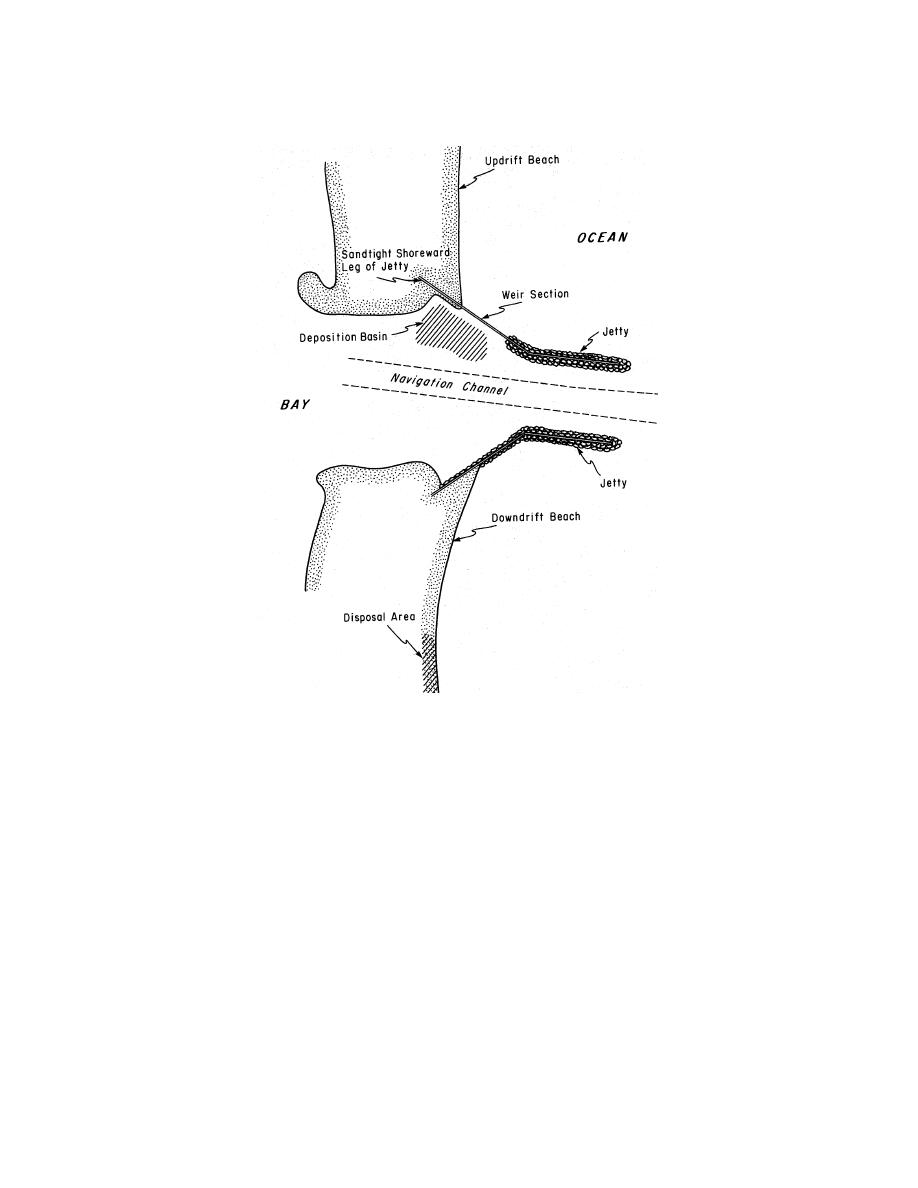
January 13, 2004
14:36
WSPC/101-CEJ
00094
539
Progress in Management of Sediment Bypassing at Coastal Inlets
Fig. 4. Typical elements of a weir jetty system.
Figure 4. Typical elements of a weir jetty system.
flows out the navigation channel between the jetties. The flood current is weaker in
the navigation channel, relative to the channel ebb current, promoting net seaward
sediment flushing. Thus, less sediment enters the bay channels, where it is lost to the
beach system if it settles in flood shoals in t27e bay or contributes additional volume
h
in bay channels that require dredging. A potential benefit for new jetty systems is
that the outer tips of the jetties may not need to extend seaward as far as a system
without a weir jetty, because seaward sediment transport from the beach along the
outside of the jetty is minimized (Seabergh and Lane, 1977). Many variations of this
example (Fig. 4) are possible, depending on structure orientation, bathymetry, and
presence of bottom features such as shoals and rock reefs. Table 1 lists weir jetty
projects in the United States, including length, elevation and orientation of the weir.
Some examples will be discussed below.




 Previous Page
Previous Page
